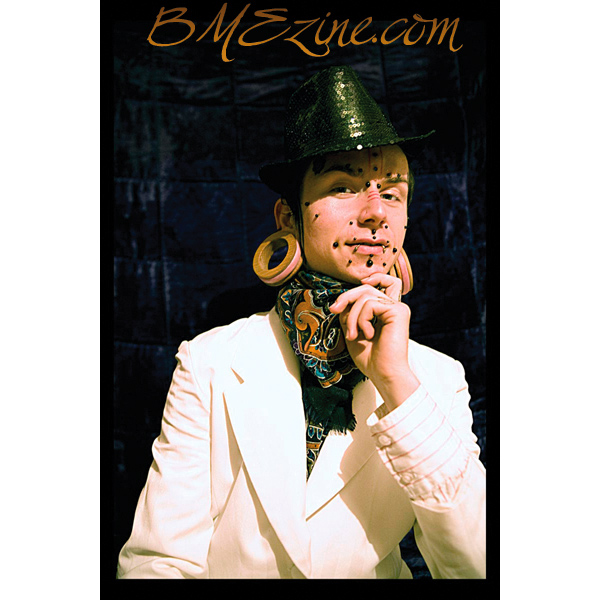 |
A fine week, in the books. Some highlights:
And that’s all for this week, folks. We’ll pop in a couple times over the weekend, and then it’s back to normal, bright and early-ish on Monday morning. Happy Halloween, ModBlog. Stay safe.
 |
A fine week, in the books. Some highlights:
And that’s all for this week, folks. We’ll pop in a couple times over the weekend, and then it’s back to normal, bright and early-ish on Monday morning. Happy Halloween, ModBlog. Stay safe.
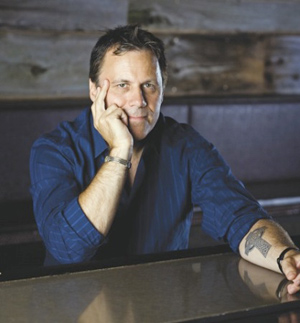 |
| Richard Roeper (Photo credit: Jim Newberry / NBC Chicago) |
[NBC Chicago] So even though we know by now that if you get a tattoo — any tattoo, even a small and loving portrait of a family member or a saint or something — you will never get a job doing anything except maybe digging graves for Satanists or lobbying for the tobacco industry, some people have been able to make it work. Like Richard Roeper, he of the now defunct Siskel and Ebert and Roeper!
I thought, If I ever do it, it’s not going to be a woman’s name or a White Sox logo or a stupid friggin’ leprechaun. It’ll be a Celtic cross. It’ll be something that has meaning the next day, and 20 years after the fact. But I waited a few more years before finally getting one. It just seemed so ridiculously trendy for a while there.
My standard line is that I got a religious symbol on my arm because I spend so much time in the company of the devil. I need to counter that by keeping God literally close at hand. It’s a joke. Kind of.
[…] I walked into Howard Stern’s studio, and the first thing he told me was he loved the tattoo. George Clooney nudged me just before we were doing a TV thing. My sleeves were rolled up; he could see the beginning of the tattoo and wanted to see the rest of it. “Very cool,” he said. Nearly everybody is complimentary. Then again, I’m sure there are some folks who have said, “Midlife crisis idiot.” Just not to my face.
After I got the tattoo, I called my mother before coming down for Thanksgiving dinner and warned her that I’d added something permanent. When I told her it was a tattoo, she replied, “Oh, that’s fine. I thought you were going to tell me you’d gone out and adopted a little Maddox.”
If George Clooney complimented one of my tattoos, I would probably hire someone to walk beside me and point to it at all times. Two thumbs way up, Roeper! Ha ha, references.
[Mercury News] According to this sordid tale of intrigue, this Angel Ayala character was getting tattooed by Jose Gutierrez and, rather than paying the $40 he was charged for the tattoo, traded the artist a handgun for the work. That … seems … fair? Except, whoops, that gun was used in a murder two years ago! Ayala was later arrested, though, so, happy ending? Eh?
[STLtoday] If there’s one thing sports fans and athletes alike love, it’s deferring blame that would usually get chalked up to “poor performance” or “stopped taking steroids” to ridiculous superstitions. If a team goes years and years without winning a championship, it’s not due to errors in management — it’s a goddamn curse. Well, when the long-suffering Chicago Cubs mightily defecated their sleeping apparatus a few weeks ago, in a year when it seemed like they were primed for a World Series appearance, it had to have been someone’s fault, right?
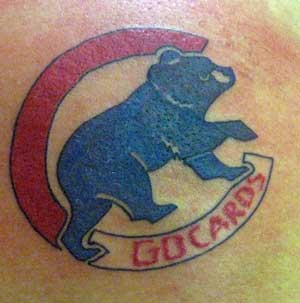 |
| Burroughs’s cursed tattoo. (Photo source: STLtoday / Jimmy Burroughs) |
Absolutely right, and that person is Jimmy Burroughs, a 26-year-old Indiana resident who, while on vacation in Tennessee, visited a tattoo parlor to get a Cubs tattoo (gotta support the team). But the tattoo artist, some joker named Deke Rivers at American Rebel in Gatlinburg, scribbled “Go Cards,” a reference to the Cubs’ divisional rival St. Louis Cardinals. Except when he covered it up, the ink over top faded, and the “Go Cards” became totally visible. And then this tattoo singlehandedly beat the Cubs in their series against the L.A. Dodgers.
“I lightly scratched it in there,” said Rivers, who has been tattooing for six years. “I wouldn’t have messed with him. I take my job seriously.”
Rivers refunded Burroughs’ $190, but Burroughs decided not to fix his flesh-and-blood endorsement of the Cards.
“This was the weird thing — after I got the tattoo, the Cardinals actually started losing and the Cubs took off,” Burroughs said.
Like the rest of Cubbie nation, Burroughs and his family believe secret forces in the universe control the club’s fate. Could the goat of 1945, the black cat of 1969 and Steve Bartman of 2003 be shape-shifters sent here to test fan loyalty?
“We are very superstitious,” said Burroughs’ sister, Amanda Burroughs, a Cubs fan living in O’Fallon, Ill. “We’re the kind of family where you have to sit in the exact same spot you did last time the Cubs won. So when I heard about the tattoo, I was like, ‘Oh my gosh.’ But then the Cardinals weren’t doing so well, so my family was fine with it. Well, we all know how that turned out.”
Yes we do: hilariously.
Once again, we are proud to post some of Paul King’s articles detailing the histories of certain piercings. Today? Nipple piercings. Click the picture below for the piece.
[Ed. note: Comments for this post have been disabled. Yak it up in the article’s forum. Thanks.]
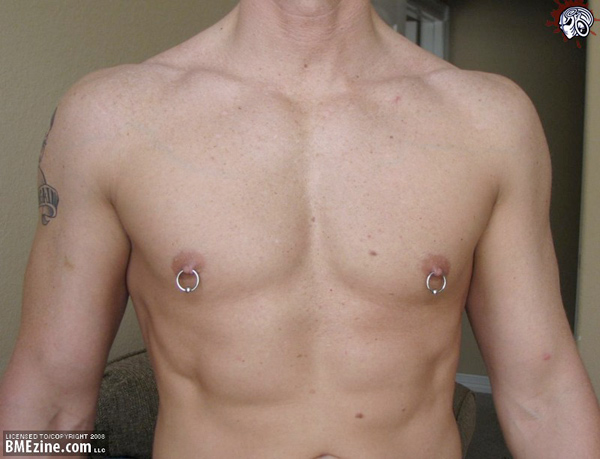
(Editor’s note: These articles were first published in The Point, the publication of the Association of Professional Piercers. Since part of BME’s mandate is to create as comprehensive and well rounded an archive of body modification as possible, we feel these are important additions.
Paul King, the article’s author, has given BME permission to publish a series of articles he wrote for The Point that explore the anthropological history behind many modern piercings. This is another in that series. This time, however, we are combining two of his articles — male and female nipple piercings — into one general nipple piercing–related column. Enjoy.)
MALE NIPPLE PIERCING
Dear Readers,
It may seem odd at first glance that I have chosen to separate the history of nipple piercing, a shared anatomical piercing, into two topics. The reason is twofold. Until modern times, males and females within a culture have not shared this custom, and because of the volume on this topic, the articles work best broken up.
First of all, Roman Centurions did not have their nipples pierced. Over the years it has been my great pleasure (and fortune) to have had many long discussions with Jim Ward, Founder of Gauntlet, PFIQ and longtime friend of Richard Simonton (a.k.a Doug Malloy). Jim has told me the genesis behind this urban myth. It appears that Doug’s only evidence of the Romans having pierced nipples was a photograph of a baroque statue from Versailles. In the photo the statue is wearing a breastplate with rings for attaching a cape. When Jim conveyed his doubts about Doug’s rather stretched conclusions, Doug replied, “Well it makes a good story…”
It appears the Karankawa Native Americans, a now extinct nomadic people that previously inhabited the Gulf Coast of Texas, “pierced the nipples of each breast and the lower lip with small pieces of cane.” That they could heal these piercings is particularly interesting since they “smeared their bodies with a mixture of dirt and alligator or shark grease” to thwart mosquitoes.1
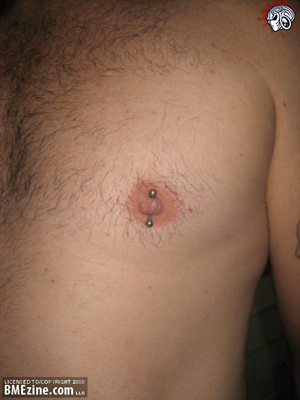 |
Both American and British sailors have passed on legends of getting pierced as an initiation for having passed an important latitude or longitude, (i.e. Tropics of Cancer and Capricorn or the International Date Line, etc.). There is enough folklore and photos to substantiate the old tales of “sailors with pierced nipples adding links each time the sailor crossed the equator.”2 However, the adding of links seems to be a lesser known practice. Additionally, there exists an abundance of sailor stories for earlobe piercing. Since the turn of the century, sailors such as Le Captain Ringman or The Great Omi, heavily tattooed and pierced, would sometimes reenter mainland society as sideshow human oddities.
The 1950s and ’60s were a time for self-exploration and sowed the seeds of the modern day body modification and S/M communities. Men such as Fakir Musafar (Rowland Loomis) and Jim Ward compelled to pierce their own nipples, bravely figured out their procedures in an information vacuum.3
Let’s count our blessings, times have changed!
__________________
1 The Handbook of Texas Online, by Carol A. Lipscomb at www.tsha.utekas.edu, her bibliography: Albert Gatschet, The Karankawa Indians, the Coast People of Texas, (1891), William Newcomb, The Indians of Texas, (1961), Richard Schaedel, The Karankawa of the Texas Gulf Coast, (1949).
2 PFIQ (Piercing Fans International Quarterly # 21)
3 Fakir pierced his nipples in 1956, Jim Ward in 1968
FEMALE NIPPLE PIERCINGS
The previous issue discussed the history of the male nipple piercing. As most of you know, I enjoy setting the record straight, debunking myths and documenting the facts. I thought this month I’d do the same thing. Instead, once again, I’ve gotten another of life’s lessons on expectations. Things are not always as simple as they would seem. What I’ve done this month is uncovered a quagmire of dead-end trails, shedding some new light on the history of female nipple piercing, with much still remaining in the dark.
Perhaps the oldest attribution of female nipple piercing comes from Eduard Fuchs. He was a German scholar, “sexologist” and writer from the early 1900s. To the best of my knowledge his work has never been translated. Unfortunately my understanding of the German language isn’t even rusty, it’s nonexistent. So I have to rely on quotes from his works that appear in various books and documents. It has been mentioned on the rec.arts.bodyart newsgroup that Fuch as well as an author named Pelham,1 “made extensive use of the same English source, one article in Society, a journal unavailable to me.”2 I, too, have been unable to find any record of this journal from the turn of the century. Perhaps some inquisitive and persistent English readers could help with further research through their local libraries.
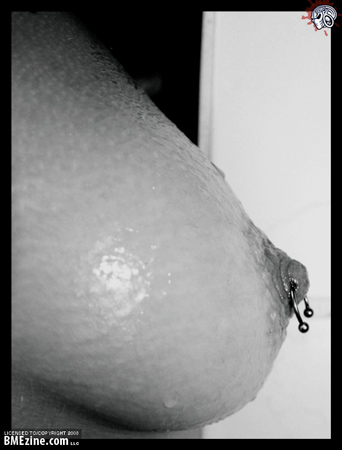 |
Quoting Fuch’s writing as the source, Hans Peter Duerr’s book, Dreamtime,3 traces the earliest known practice of female nipple piercing to perhaps the Court of Queen Isabella of Bavaria. Her rule (1385 to 1417), though extravagant was rather short lived:
“Queen Isabella … introduced the ‘garments of the grand neckline,’ where the dress was open to the navel.4 This fashion eventually led to the application of rouge5 to freely display nipples, those ‘little apples of paradise’ to placing diamond-studded rings or small caps on them, even piercing them and passing gold chains through them decorated with diamonds, possibly to demonstrate the youthful resilience of the bosom.”6
I have included the entire section of text here with footnotes not normally quoted from Dreamtime in order to illustrate that though piercing of female nipples may have occurred during the Court of Queen Isabella, we cannot draw that conclusion from this passage as written. The paragraph was patched together by Mr. Duerr using three sources, some written over 60 years apart and in different languages. Until more research is done, one can only deduce that the fashion of the time led to a trend of piercing nipples at some unspecified later time, perhaps months or even years later. Some may say I’m splitting hairs here, but I would hate to see the female nipple piercing renamed the “Queen Isabella,” follow me?
Eduard Fuch is again quoted by author Stephen Kern, in Anatomy and Destiny. This time the reference is much later and from a different source. “In the late 1890s the ‘bosom ring’ came into fashion briefly and sold in expensive Parisian jewelry shops. These ‘anneaux de sein’ were inserted through the nipple, and some women wore one on either side linked with a delicate chain. The rings enlarged the breasts and kept them in a state of constant excitation.7 This provocative ornamentation was rare …”
Unfortunately things get even murkier from here. D.W. Jones, who seems to have done a fair amount of research, posts on rec.arts.bodyart, “In 1898 a single Bond Street jeweler is supposed to have performed the nipple-boring operation on forty English ladies and young girls … In fact many ladies, instead of rings, had small chains fastened from breast to breast, and a celebrated actress of the Gaiety Theatre wore a pearl chain with a bow at the end.”8 Unfortunately, this is not footnoted and as such will have to be treated as an urban myth until the source is traced. If anyone knows how to track down D.W. Jones, please tell him I’m looking for him …
The twentieth century brought a flurry of sensational books on erotica. Unfortunately most authors’ intent was more to titillate than to educate. It’s hard to find facts not steeped in the authors’ opinions, usually running to extreme. The necessity for footnotes or bibliographies was usually overlooked in these quasi-scientific books. A strong support for D.W. Jones’s post may be found in this following passage from a book of this lurid genre:
“No more perfect example of Victorian extremism can be found than the unbelievable breast piercing craze that swept London in the 1890s. This barbaric practice achieved fantastic popularity among seemingly sane, civilized Englishwomen, who submitted to the excruciating pain of having their nipples, pierced in order to insert decorative gold and jeweled rings. In an attempt to explain what had driven so many females to embrace such a crackpot fad, a fashionable London modeste wrote a letter to a popular magazine,9 which said in part, ‘For a long time I could not understand why I should consent to such a painful operation without sufficient reason. I soon, however, came to the conclusion that many ladies are ready to bare the passing passion for the sake of love. I found the breast that the ladies who wore rings were incomparably rounder and fuller developed than those who did not. My doubts were now at an end … So I had my nipples pierced, and when the wounds healed, I had rings inserted … With regard to the experience of wearing these rings, I can only say that they are not in the least uncomfortable or painful. On the contrary, the slight rubbing and slipping of the rings causes in me a titillating feeling, and all my colleagues to whom I have spoken on this subject have confirmed my opinion.’”10
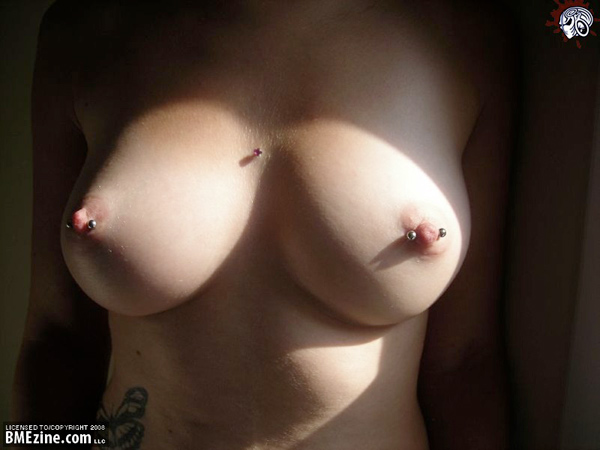
Fuch’s French joined with Jones’s and Hurwood’s English references of the same period seem to support the notion of a brief but extraordinary fashion trend. It would be wonderful to someday discover in which country the trend started and by whom.
A piece of folklore I feel compelled to share was passed on to me by Jim Ward. However, please understand none of my research, in anyway substantiates this information appearing in World Medicine. “In the France of Louis XIV [1638-1715], the church condoned the extreme décolleté of ladies’ fashions only because the wearing of gold rings through the exposed nipples made them ‘dressed,’ not bare. The fashion spread across the Channel and a few haut ton [hauteur?] had gold rings inserted in their nipples. But as far as I can find out, the regular wearing of nipple rings has been common only among the Berber tribe of northern Algeria known in the mountains as the Kabyle.”11
Researching the Kabyle, I could find no anthropological references to female nipple piercing. It is near impossible to believe the women of the Kabyle-Berber society, would have nipple piercings when one considers:
a) Religiously, they’re fairly strict Muslim.
b) Culturally, they’re extremely subjugated and sexually repressed by Kabyle men, and,
c) Materially, they’re almost exclusively limited to silver and coral for jewelry adornment. Trying to heal a nipple piercing with silver seems rather hindering, if even possible.
It’s surprising that such a sensational article could appear in a medical journal without any annotation. But to quote Doug Malloy, “It makes for an interesting story anyways, doesn’t it?” If any reader has documentation to support any statements from the medical journal article, please come forth. I have been unable to track the article’s author.
After the 1890s, the female nipple piercing seems to go completely underground. I have been unable to trace any references or photos until the quite remarkable piercing legend, Ethel Granger. For those readers unfamiliar with Ms. Granger, she appeared in the first edition of Guinness Book of World Records. She was entered as the Smallest Waist in the world.12 With strong encouragement from her husband, Ethel started modifying her body when she got married in the 1920s. By World War II, she had both her nipples pierced and over ten ear piercings in each ear many of them stretched and or punched, including her conch. She had two piercings in her nostrils and one in her septum that she could connect by running a knitting needle from one nostril, through the septum and out the other nostril.13 Certainly there were more women secretly with adorned nipples, however material remains elusive.
In closing, having read both nipple articles, the reader will notice from the 1890s onward both men and women of European and American societies were having their nipples pierced. However it appears very early on, female nipple piercing was preformed within the fashion conscious affluent classes while male nipple piercing was practiced by the working class fringe, mostly sailors and carnies. While the stylish quickly dropped the practice, those finding significance in the ritual or ornamentation in their lifestyle, carried on the tradition. In the later half of the twentieth century, it appears not much has changed.

______________
1 I am not familiar with the author Pelham or his work.
2 A website hosted by Anne Greenblaat, http://www.faqs.org/faqs/bodyart/piercing-faq/historical/, Article: “Titrings, a bit of History” by D.W. Jones, posting date May 2000
3 Dreamtime, Concerning the Boundary between Wilderness and Civilization, by Hans Peter Duerr, 1978, translated by Felicitas Goodman, 1985.
4 Dreamtime, pg 54, original text footnote #62, author K. Weinhold, Die deutschen Frauen in dem Mittelalter II, (Wein, 1882), pg. 276
5 Dreamtime, pg 54, original text footnote #63, author M. Garland, “The Changing Face of Beauty,” (London 1957), pg. 71
6 Dreamtime, pg. 55, original text footnote #64, author Eduard Fuchs, Die Frau in der Karikatur, (Muchen, 1925), pg. 179.
7 Anatomy & Destiny, Stephen Kern, (New York 1975), pg. 97, original text footnote # 8, author Eduard Fuchs, Illustrierte Sittengeschichte vom Mittelalter bis zur Gegenwart, Erganzungsband, (Munich 1912) pg. 68. Fuchs refers to an original article in Geschlecht und Gesellschaft, Bd. II, Heft. 3.
8 From the website hosted by Anne Greenblaat, http://www.faqs.org/faqs/bodyart/piercing-faq/historical/, Article: “Titrings, a bit of History” by D.W. Jones, posting date May 2000
9 Unfortunately no magazine title is given! Could this also be the illusive “Society” magazine?
10 The Golden Age of Erotica, Hurwood. 1965. pg. 305-306.
11 Those Little Perforations. Tim Healey, Radiologist. Article in World Medicine November 15, 1978.
12 Guinness has since changed the category to Smallest Waist on a Living Person. So unfortunately, Ethel has been displaced by a living, though larger, waist!
13 Piercing Fans International Quarterly (PFIQ), Issue #15, Interview by Fakir Musafar, Editor Jim Ward.
My usual disclaimer: I am not an anthropologist. From time to time, there will be errors. Please be understanding and forth coming if you have any information you would like to share.
Please consider buying a membership to BME so we can continue bringing you articles like this one.
![]()
As promised here’s the suspension footage from João Caldara (more) I promised you..
[Javascript required to view Flash movie, please turn it on and refresh this page]
All the world’s a stage, and all the suspendees (Fabio & Diego) and helpers (Domi, Ciro, Feijão and Hell) merely players.
Don’t forget! If you’ve got a video you’d like featured on ModBlog please feel free to send it to [email protected] or use Megaupload.com/Yousendit.com.
Clearly, what we have here is Dave Gillstrap learning to waterski (with CJ‘s help), or perhaps Dave showing the Bangkok, Thailand, crowd how to apprehend a suspect with some sort of futuristic (archaic?) law enforcement device, or maybe an example of what every massage will be like in 2024.
Below, the audience gasps in horror as Dave just straight-up rips all of the skin of CJ’s body, revealing an impossibly handsome skeleton, or something.
… or it’s just a series of neat photos from the 2008 MBK Tattoo Contest. Either way — good morning, ModBlog! Happy Halloween!

This man is 12 feet tall, and was carved out of pure granite, by Jesus, under supervision of the Justice League of America, for some reason. About his tattoos, he says, they “started off as just a tribal sun in the middle of my back, and then it grew wings, then went down the left arm, and a few months later down the right arm. Next up will be the left and right thumb and wrapping around the wrists, about four inches up the arm.”
Sigh. If anyone needs me, I’ll be doing three- or nine-thousand sit-ups and eating raw eggs by the handful, shell included. Have a good night, ModBlog, and we’ll see you in the morning.
See more in “Tribal and Blackwork Tattoos“ (Tattoos)
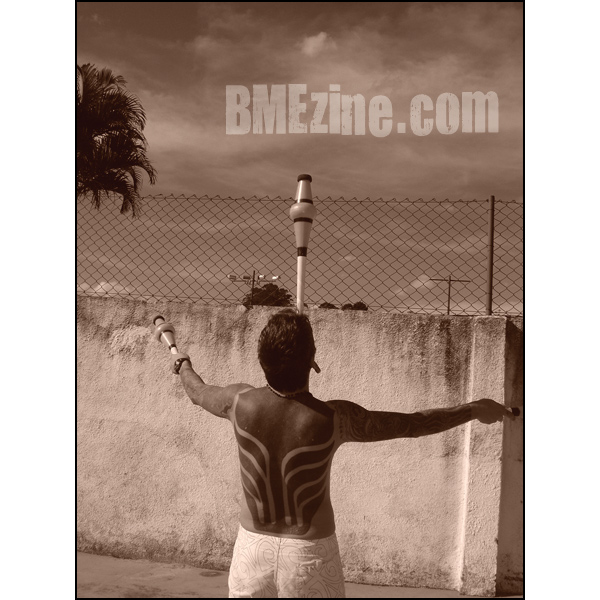
Above: Joao Caldara attempts to swallow an entire juggling pin, probably. More impressive displays of balance below:
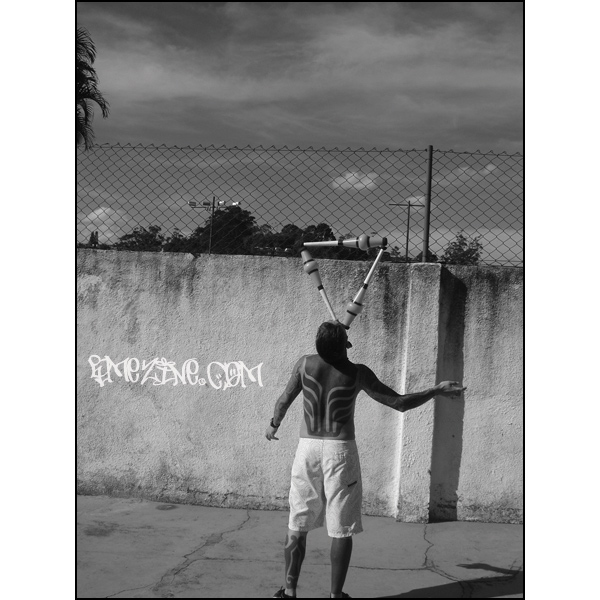
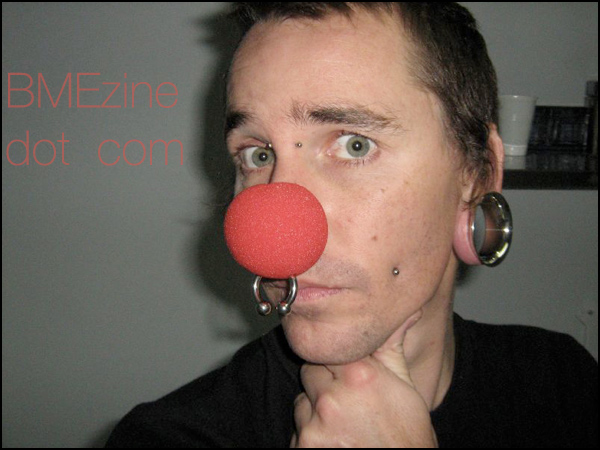
Pensive Clown is pensive. (Pensive Clown is also IAM: madroota.)
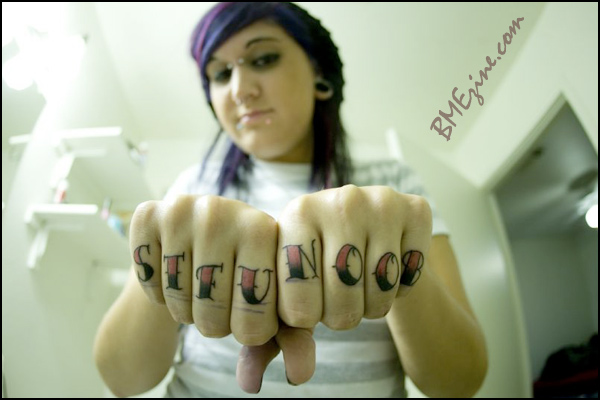
… wait, what? I just got here. I haven’t even had a coffee yet. Why you gotta hate?

Now, now — I appreciate the support, Sylvester, but maybe watch the potty-mouth.
Oh, right. Mornin’, Modblog!
(“STFU NOOB” is on IAM: h3110xk177y by Mitch at In The Flesh in Austin, TX. Swearin’ Sylvester is by Fred “Big Red” Bulbeck at Skin Creations Tattoos and Piercing in Hamilton, Ontario, Canada.)
See more in “Hand Tattoos“ (Tattoos)
See more in “Cartoon Tattoos“ (Tattoos)